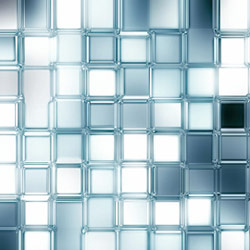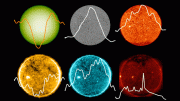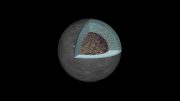
Researchers found a method to alter the microanatomy of glass, paving the way for customizing its strength and flexibility.
Engineers at Yale University have developed a method that allows them to vary one aspect of a material’s microstructure while holding all other features constant, resulting in metallic glass composites that are optimized for tensile ductility.
Researchers at Yale have developed a way to alter the microanatomy of glass and measure how the changes affect the material’s overall character — offering new possibilities for tailoring glass with unusual strength and flexibility.
The method also applies to a wide variety of materials other than glass, including conventional metals like steels, porous materials, natural materials, and composites.
“Correlating structure with property is the holy grail of materials science, and has been very difficult to study, particularly for technologically interesting materials,” said Jan Schroers, professor of mechanical engineering and materials science at Yale. “We can now develop metallic glass composites that are optimized for tensile ductility, perhaps the most important material property for structural applications.”
Ductility refers to a material’s plasticity, or its ability to change shape without breaking. Metallic glasses are metal alloys, or blends, that can be extremely strong. A challenge for materials scientists has been finding a way to design metallic glasses with greater ability to withstand immediate fracture upon deformation.
Schroers is the principal investigator of the research, which was published July 17 in the journal Nature Communications.
The new method, which the researchers call “artificial microstructures,” allows them to vary one aspect of a material’s microstructure — spacing, volume fraction, or shape, for example — while holding all other features constant. The method also allows them to measure the changes’ effects on the material’s general properties, such as strength and flexibility.
“Our method allows us to ‘decode’ microstructures and establish microstructure-property relationships,” Schroers said. “In the past, this could only be done, with some exceptions, through computer modeling.” But computer modeling has rarely been able to predict the properties accurately.
Now researchers can design actual new microstructures and make scores of them in a matter of weeks.
Schroers, an expert in metallic glasses, is already using the new method to examine flaw tolerance and to understand nature’s own design optimization processes.
“We can readily and highly quantitatively do this now,” he said.
The paper is titled “Designing tensile ductility in metallic glasses.”
Baran Sarac of Yale is co-author.
This work was supported by the U.S. Department of Energy, the National Science Foundation, and Yale’s CRISP center.
Reference: “Designing tensile ductility in metallic glasses” by Baran Sarac, and Jan Schroers, 17 July 2013, Nature Communications.
DOI: 10.1038/ncomms3158









OH my Gawd! They invented Transparent Aluminum!!!
The key to wealth beyond the dreams of avarice!